Full business and design process
This project follows the Design Thinking process – from user insight and problem definition to ideation, prototyping, and testing. It’s a human-centered approach that ensures the final concept is both relevant and realistic – balancing emotional value with business potential.
Brief
Kind Hearts Club was developed during KEA’s entrepreneurship semester as a startup concept that uses jewellery to amplify identity, mental health, and self-expression. The brief required us to work with one of the UN’s 17 Sustainable Development Goals.
We chose UN Goal #3 – Good Health and Well-being, focusing on emotional wellbeing and mental health as a foundation for sustainable development.
Our goal: to build a modular jewellery brand that lets users mix, layer, and place pieces based on their mood, needs, or identity. The concept emerged from deep engagement with our target group, and challenges traditional jewellery norms through softness, irregularity, and emotional visibility.
Research & Business context
Empathize
We combined ethnographic research with business modelling to understand our target group’s values, needs, and barriers:
Tools Used:
Probekits (playdough forms, drawings, and moodboards)
Street studies and observations
Survey with 200+ responses
In-depth interviews with neurodiverse users
Strategic Tools:
Business Model Canvas
Value Proposition Canvas
DART analysis
SWOT
Key Insight:
Jewellery is not just an accessory — it’s a way to manage emotions, signal identity, and navigate overstimulation. Neurodiverse users in particular use colour, texture, and form to stay grounded and express themselves.
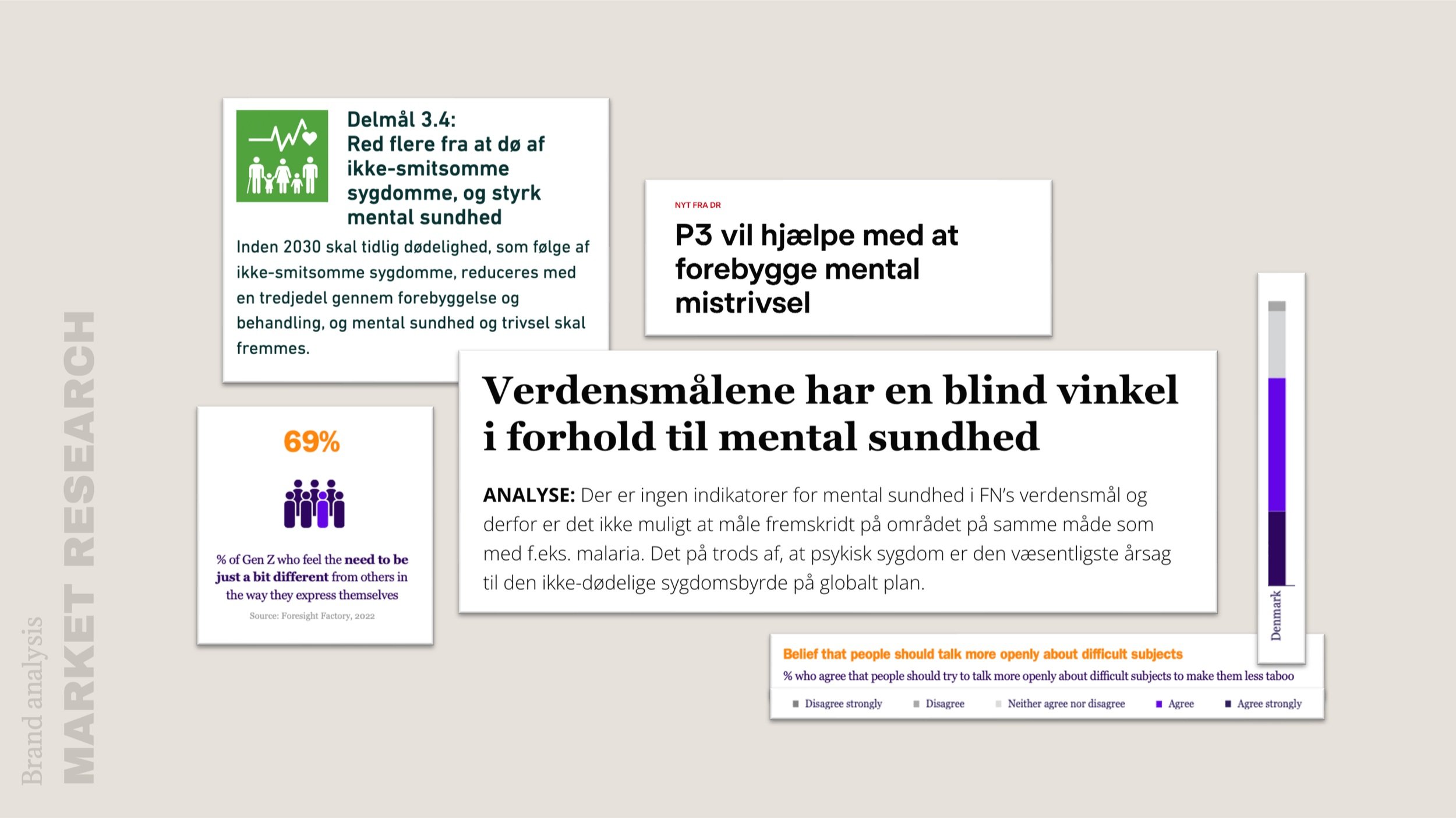
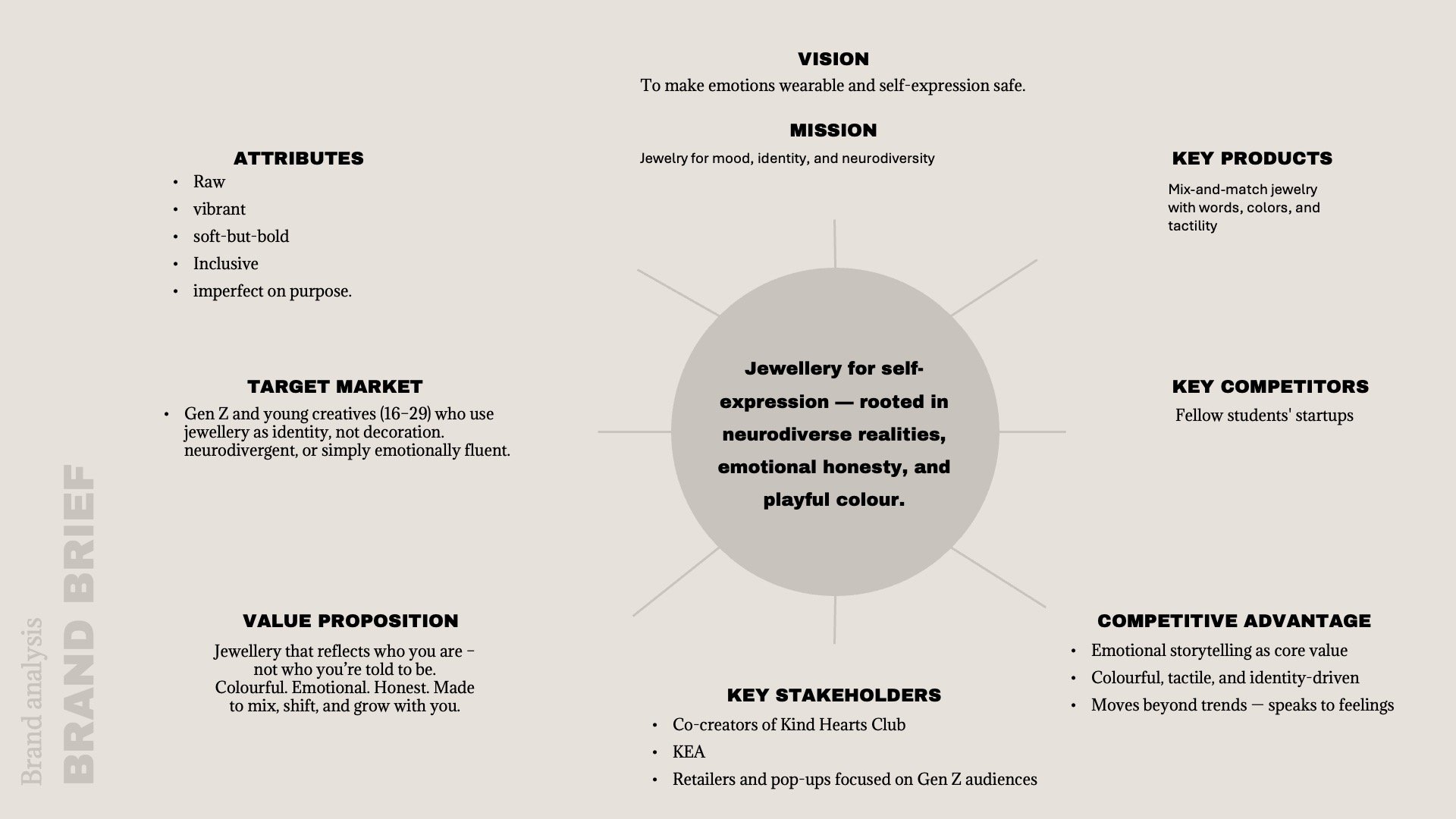
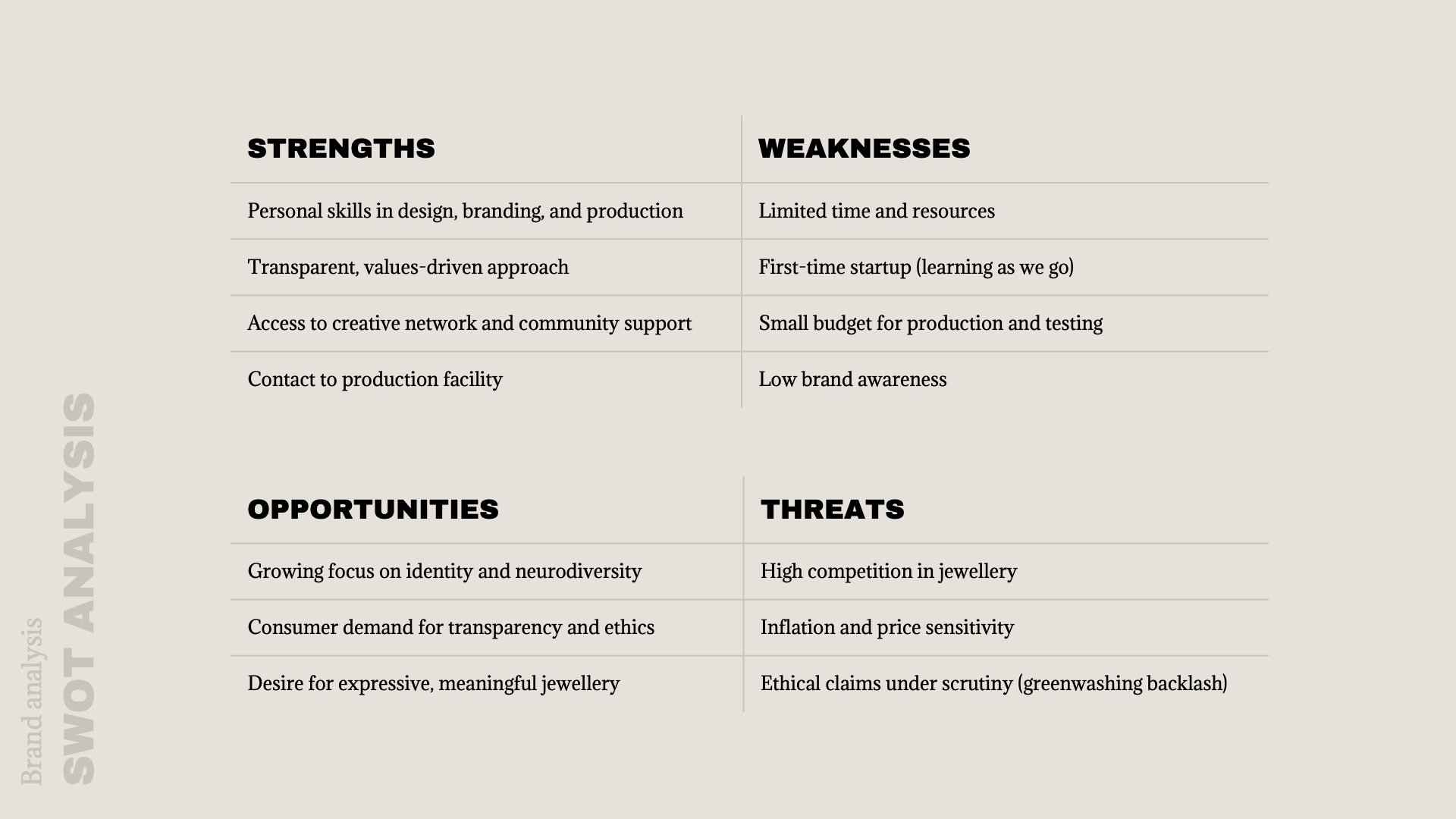
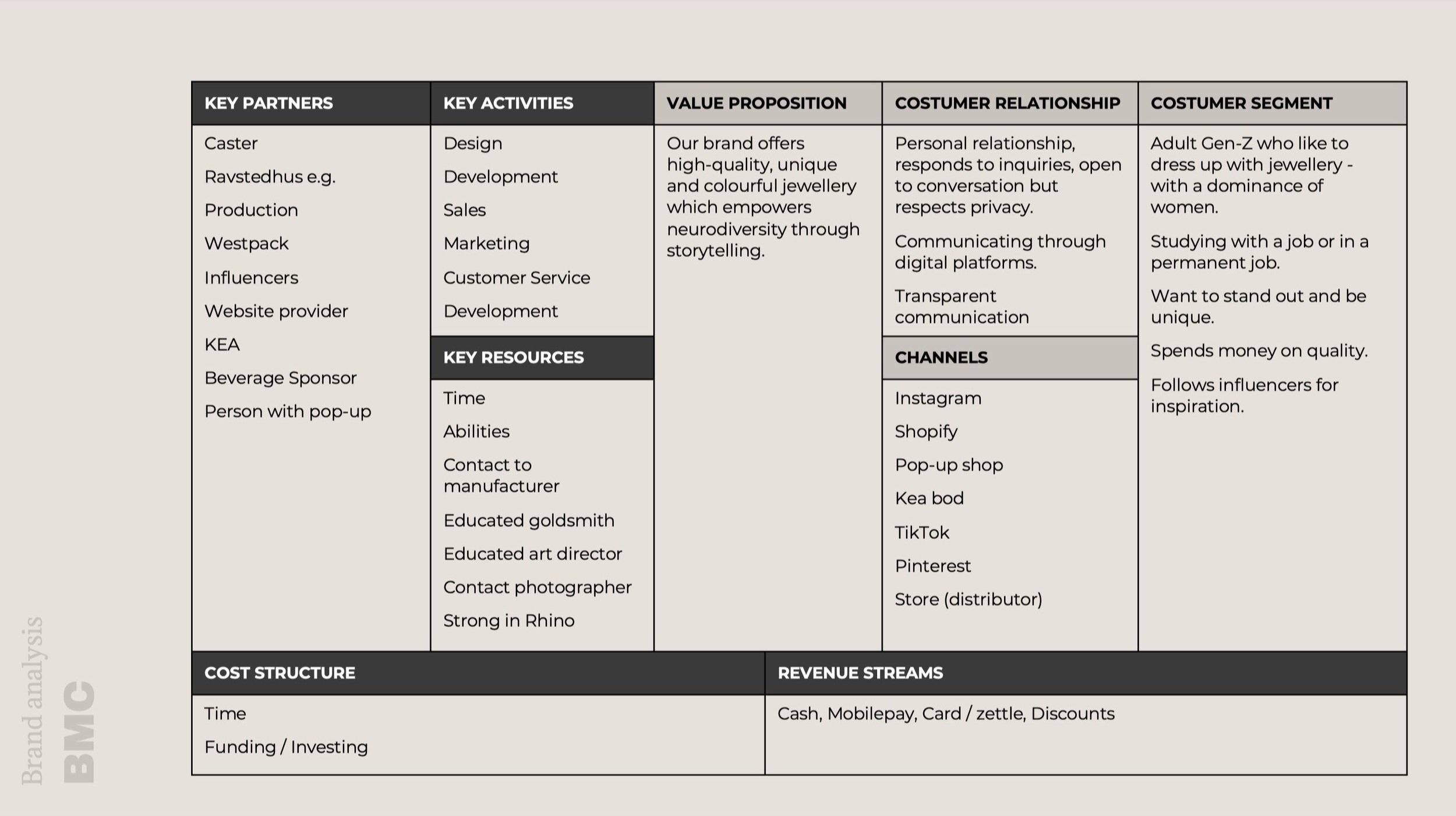
Target Group, Persona & Strategic Framing
Define
We refined our direction using empathy maps, co-creation insights and user interviews.
Persona: Katrine
22, neurodivergent. Sensitive to stimulation, but bold in expression. Uses jewellery to anchor mood and reflect identity. Prefers emotional honesty over aesthetic polish.
Point of View:
"Katrine is a vibrant individual who needs jewellery in undulating shapes — pieces that can be reconfigured to reflect their eclectic mood and identity. Imperfections become beauty, flaws become flair."
HMW Question:
How might we design emotionally expressive jewellery that reflects mood and identity — without hiding flaws or feelings?
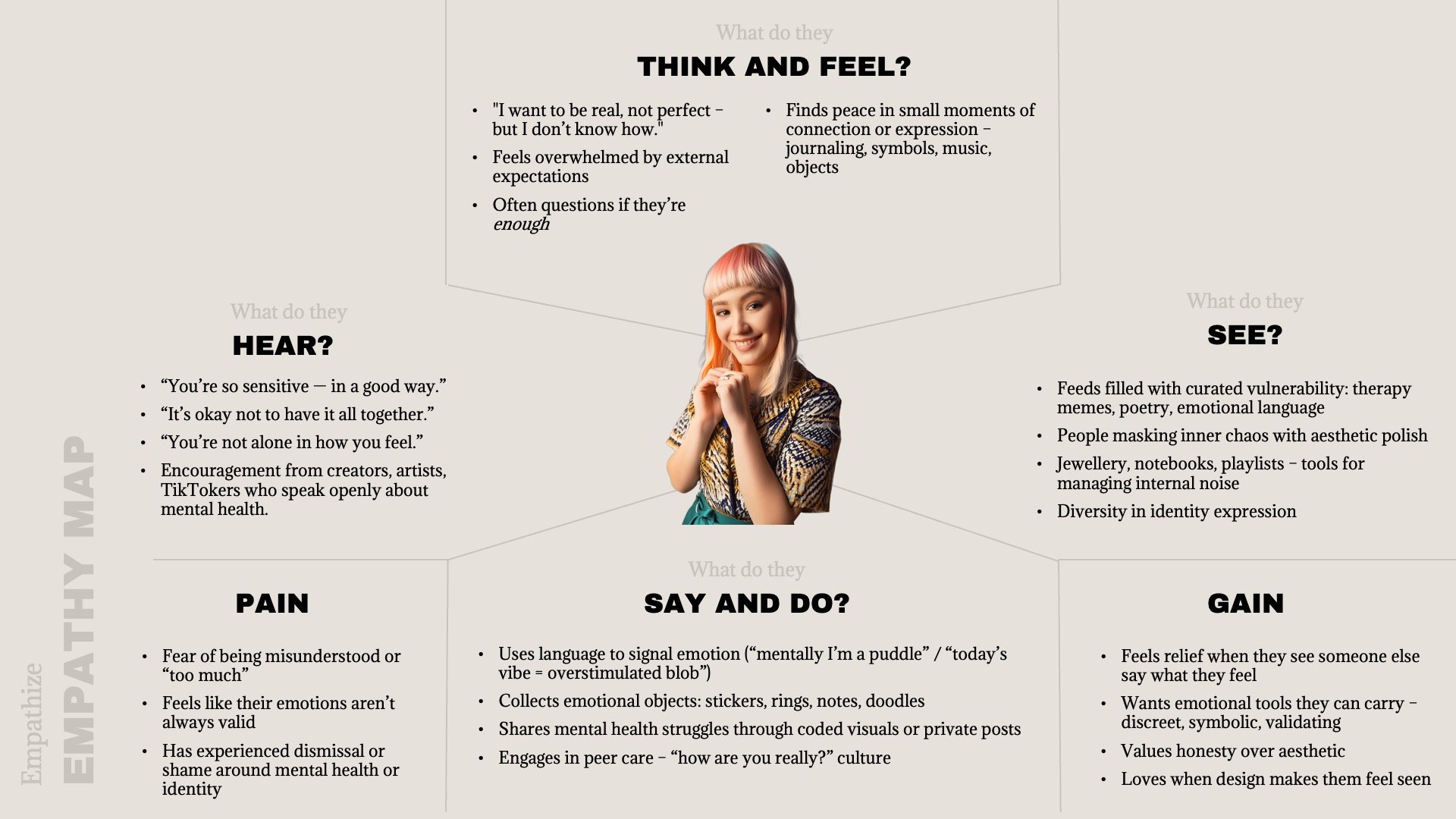
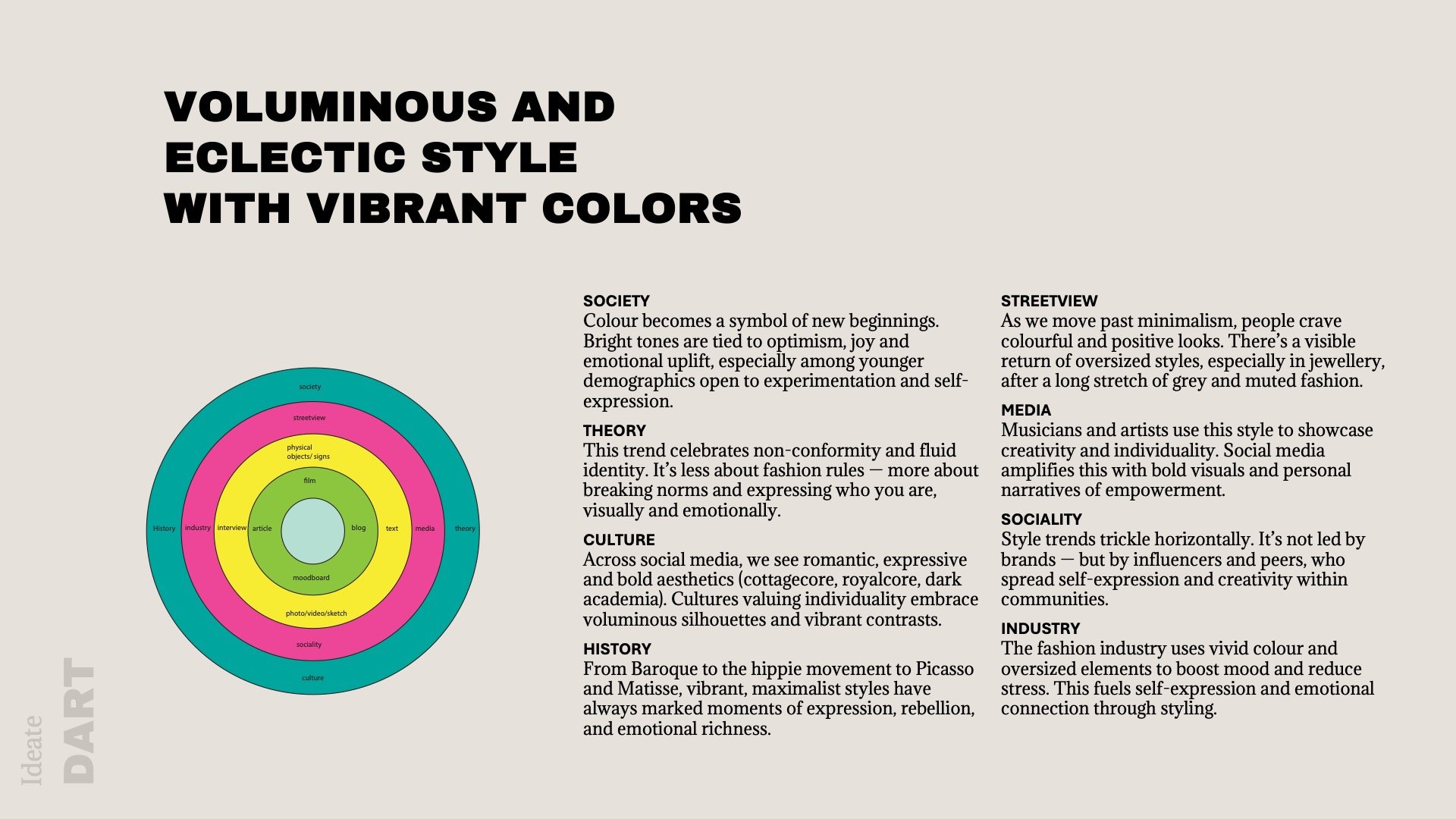
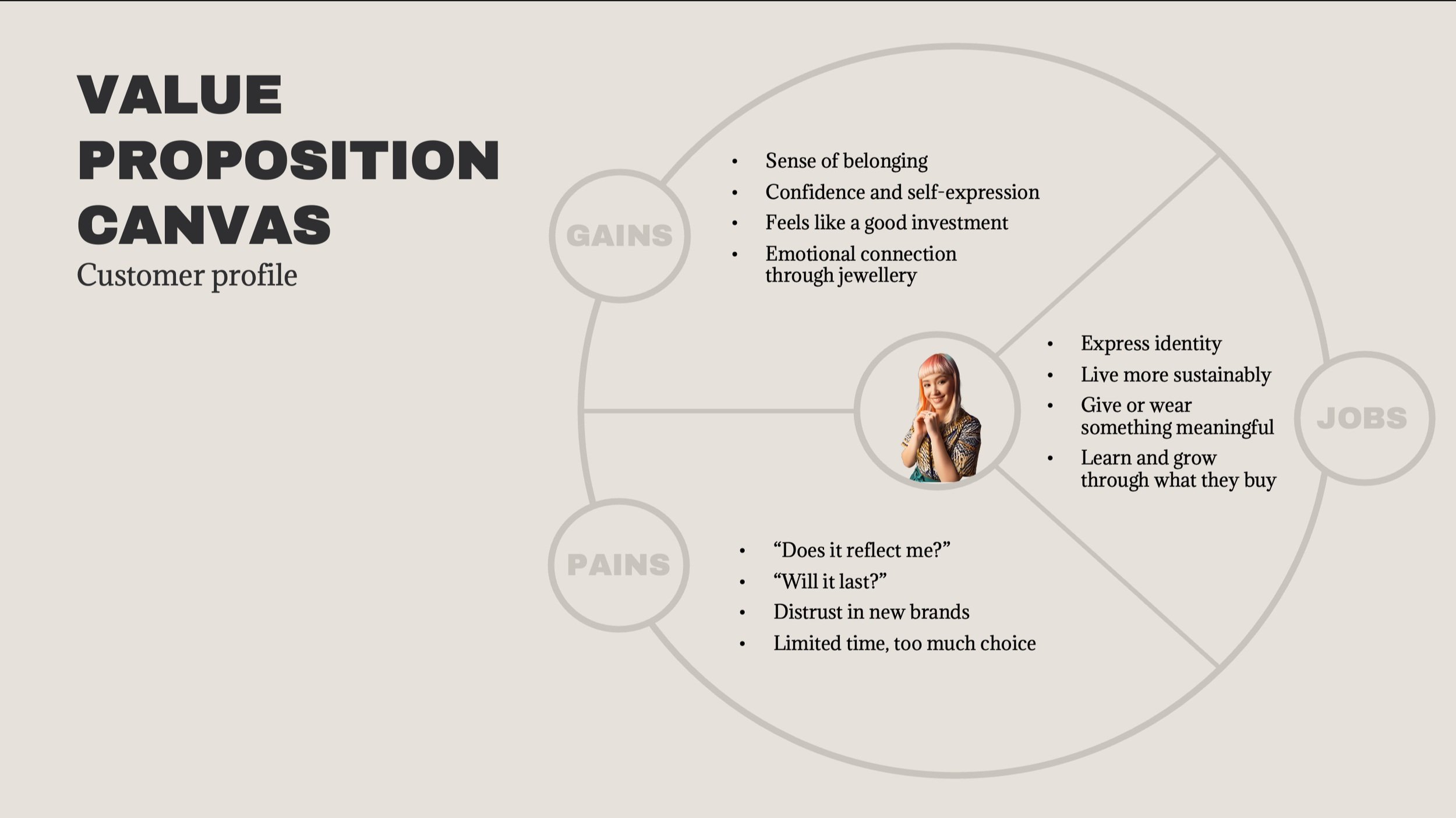
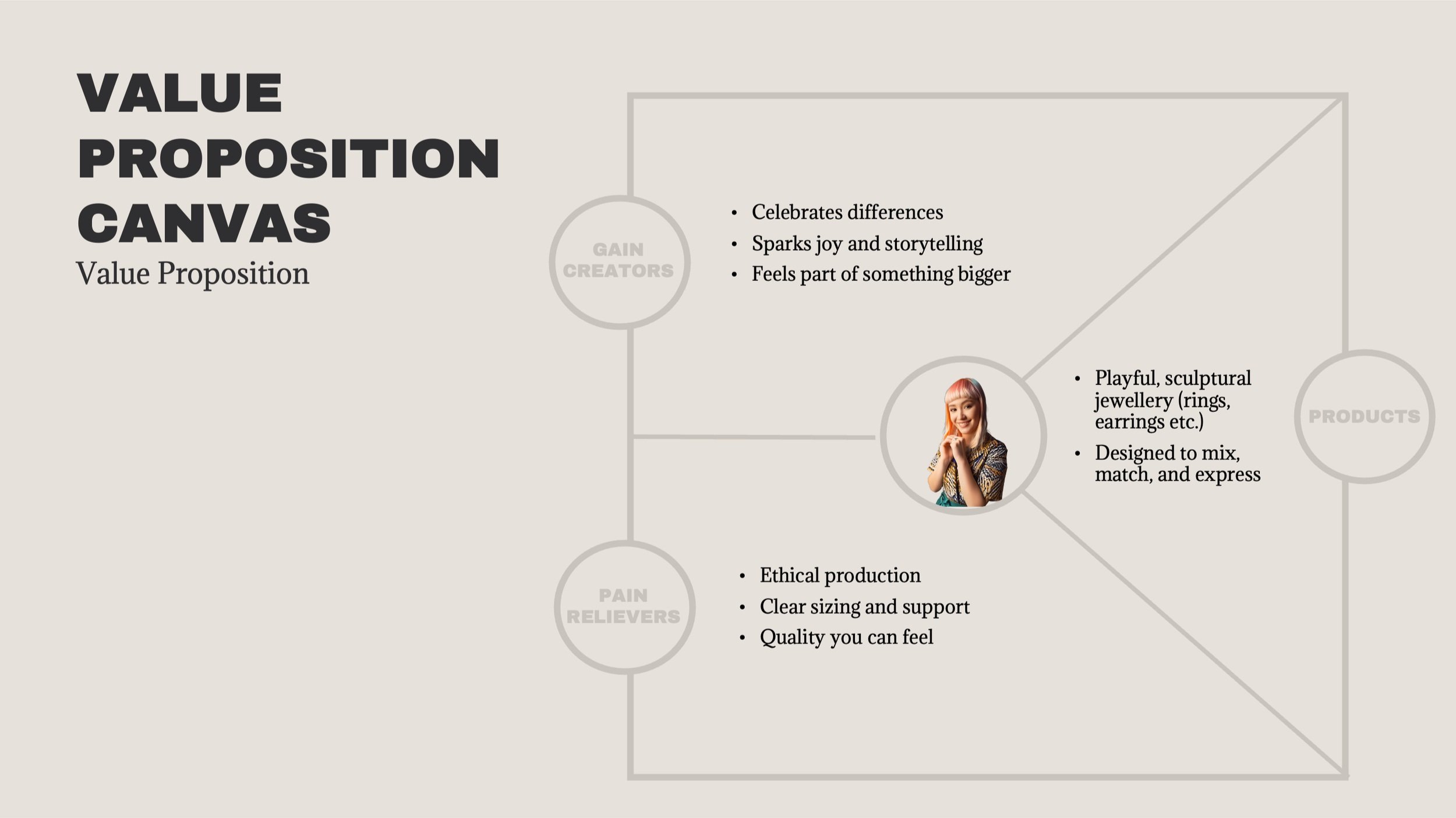
Design Drivers & Moodboard
Define
The brand is rooted in softness, irregularity, and expressive individuality — not trend cycles.
Design Drivers:
Playful modularity
Voluminous, organic forms
Imperfect textures
Emotional colour palette
Moodboard Themes: Mix & match, colour overload, softness, and visual chaos.
Sketching & Material Experiments
Ideate
We explored shape and emotional tactility through drawing and clay. The goal was not perfection, but personal expression.
Key Focus:
Pieces that don’t follow norms (bent, round, soft)
Surfaces that “own” their scratches and flaws
Modular pieces that could be layered or worn in multiple places — giving users control over their visual identity
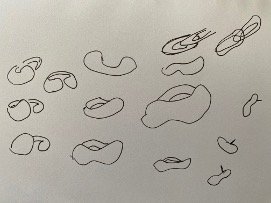
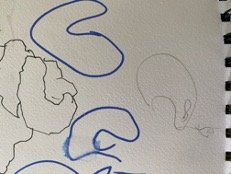
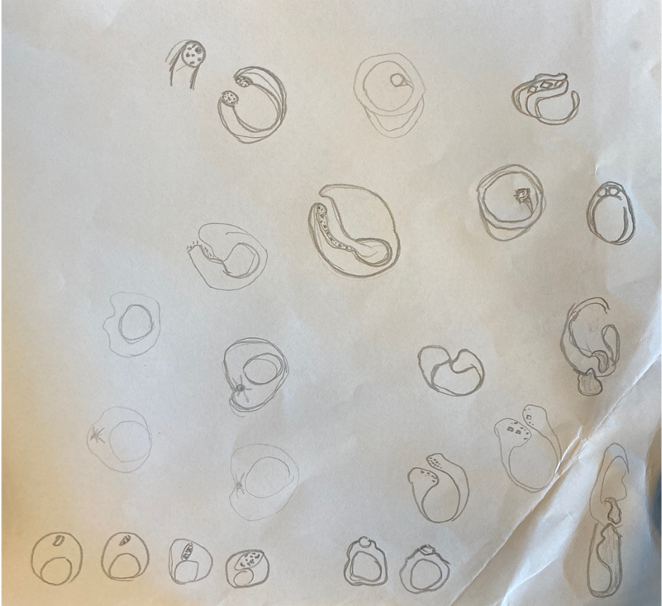
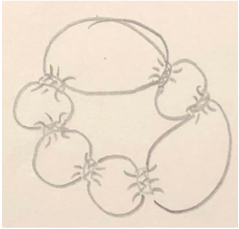
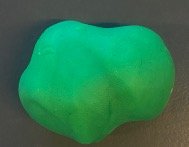
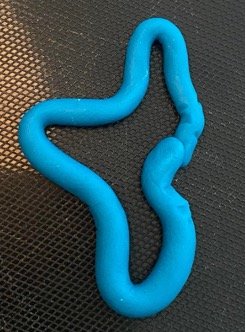
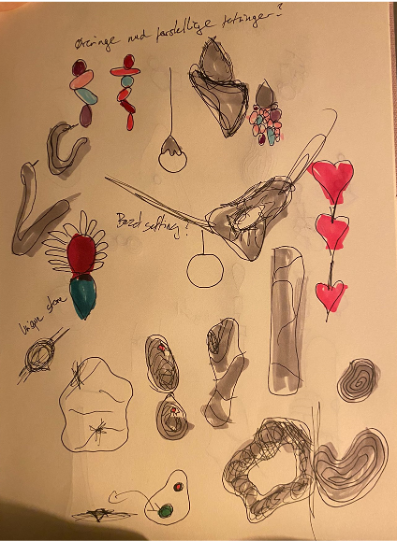
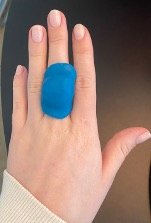
Prototype & Test
Key Insights
We created a series of stackable, wearable components using different materials — and tested through presentations and informal feedback with users and peers.
Modularity = empowerment. People wanted to decide what goes where.
Visible marks and roughness were embraced (“This looks like me — it’s not perfect”)
Shapes and colours offered playful, mood-based ways to express self without saying a word
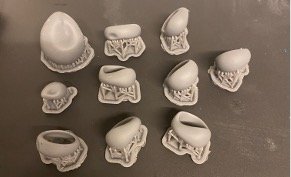
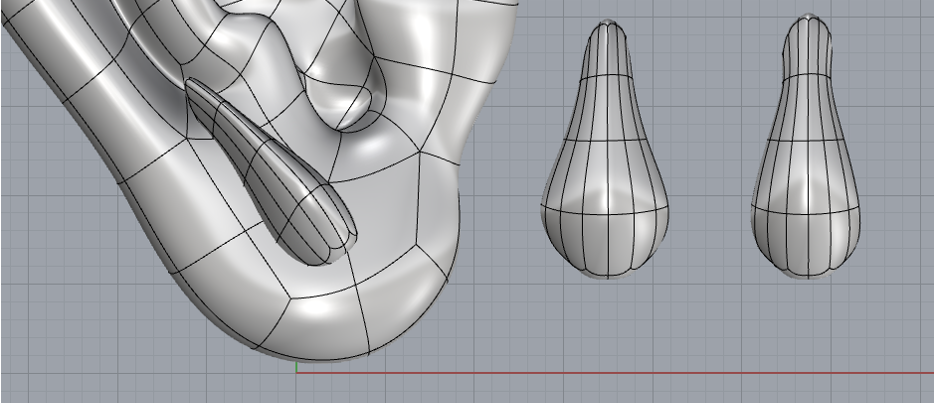
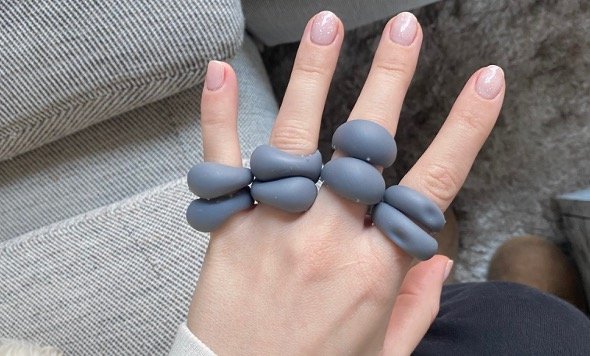
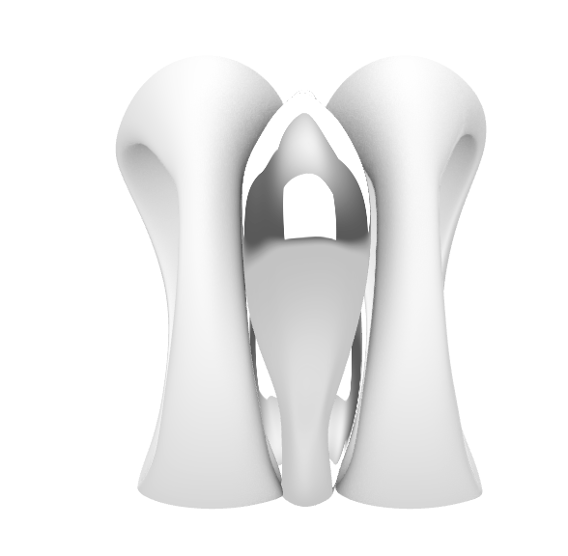
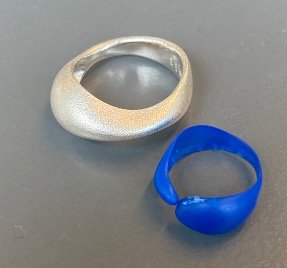
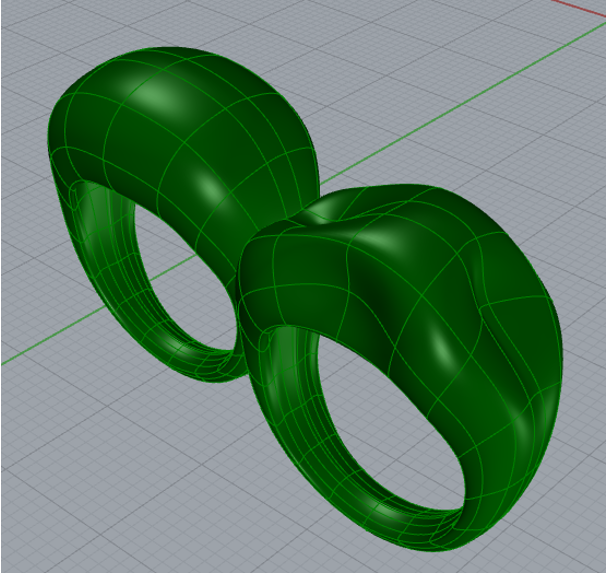
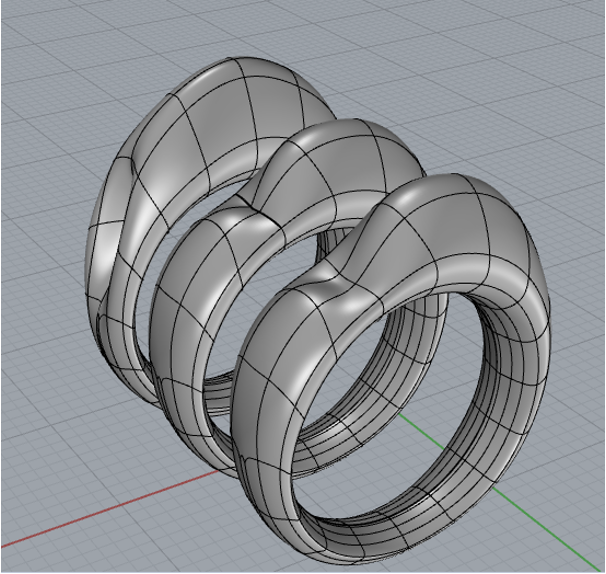
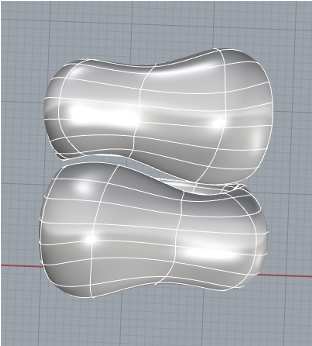
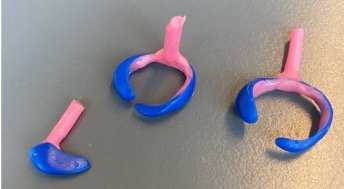
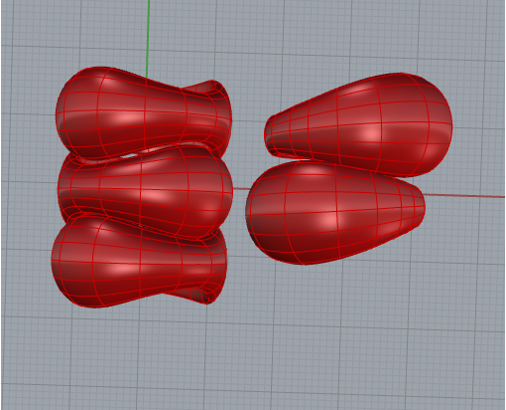
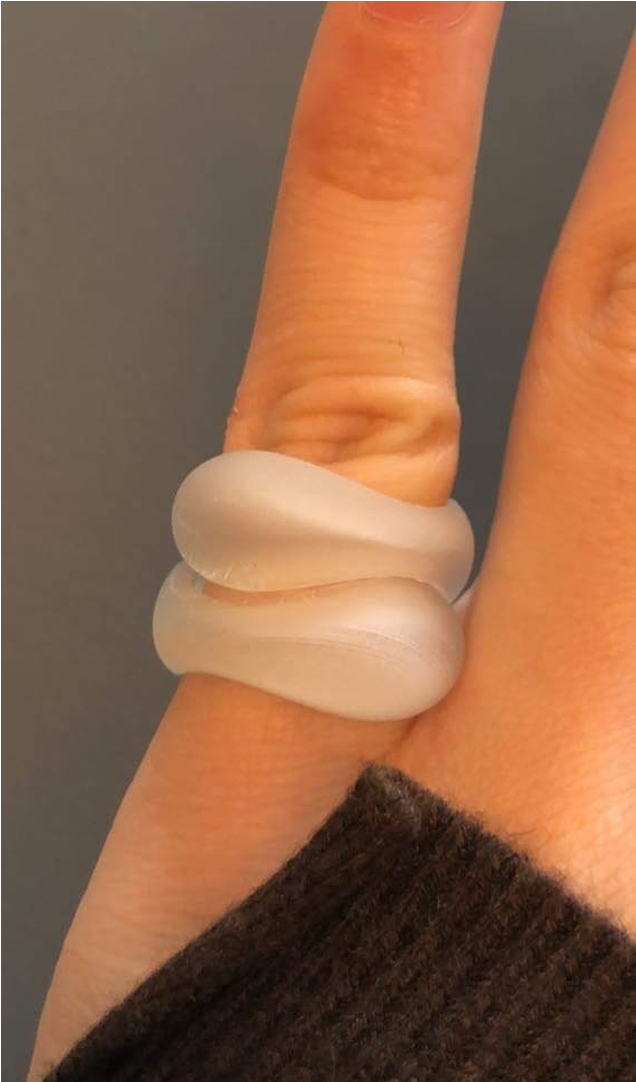
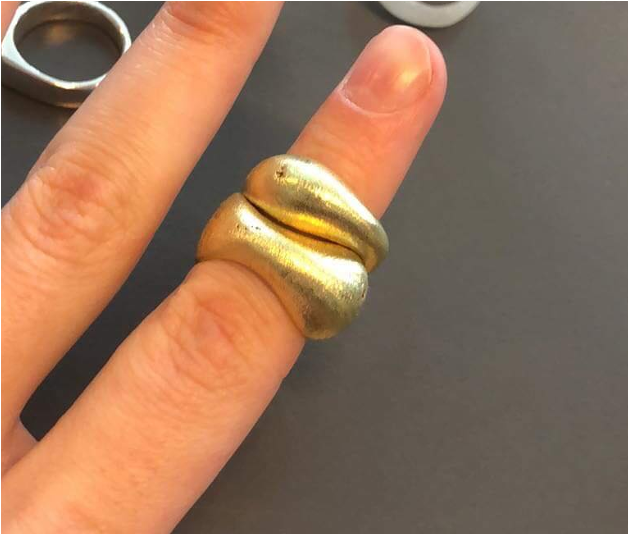
Outcome
Kind Hearts Club is a modular jewellery startup rooted in emotional truth. Designed alongside neurodiverse voices, it uses irregularity, texture, and playful colour to create a collection that is expressive, soft, and human. Pieces can be layered, repositioned, or worn in new ways — letting users shape how they feel, not just how they look.
Logo
Our logo is a leopard that symbolizes strength, power, and courage, as it is eating a heart to gain kindness. This represents our dedication to celebrating neurodiversity with a message of love and absolute kindness.
Tone of Voice:
Our brand tone should be a unique blend of being informative, positive, light-hearted, and friendly. We want our customers to feel like they are talking to a friend.
The project shows how mental wellbeing and self-expression can be embedded into physical design — creating more caring, flexible, and inclusive futures.
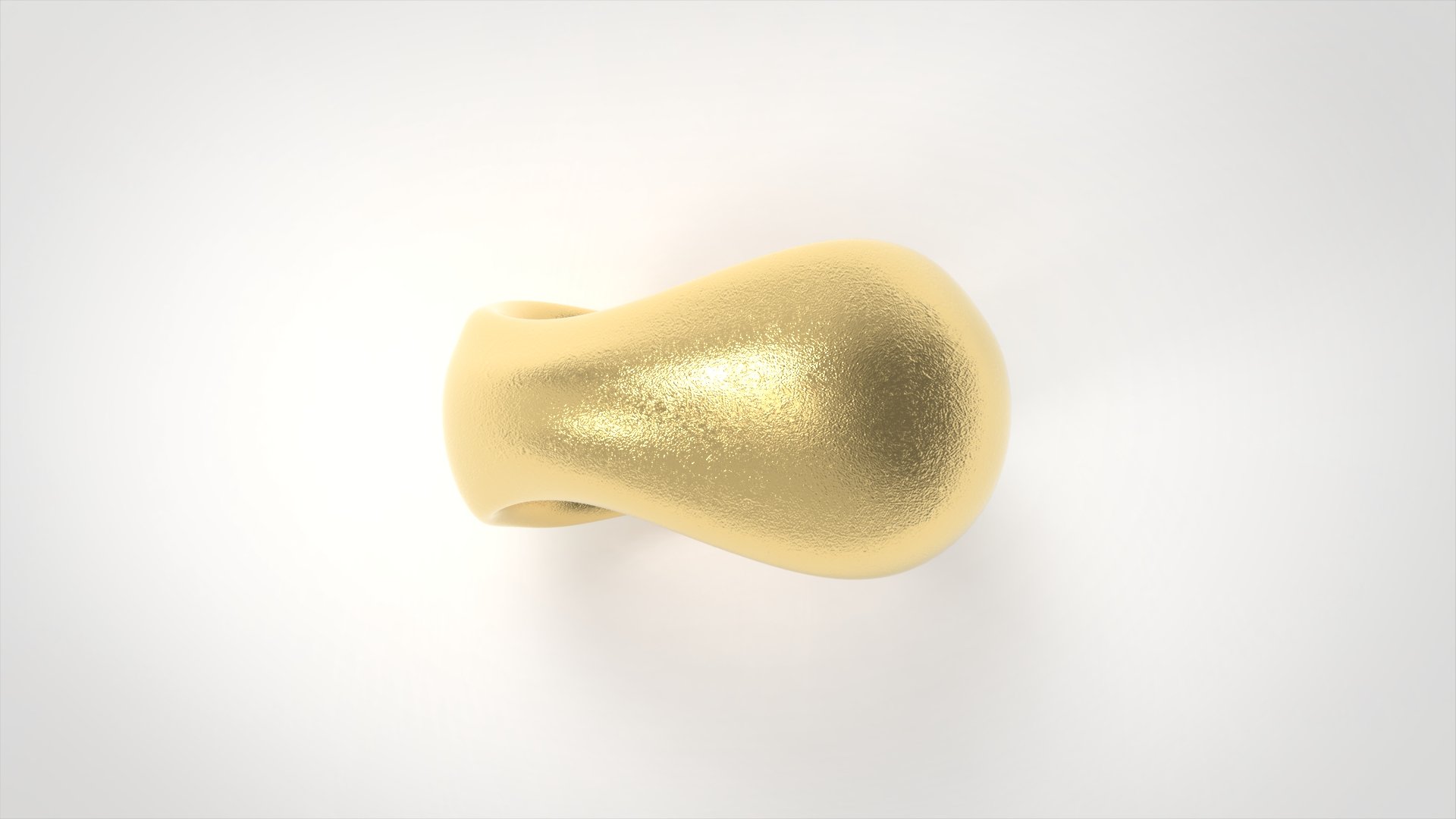
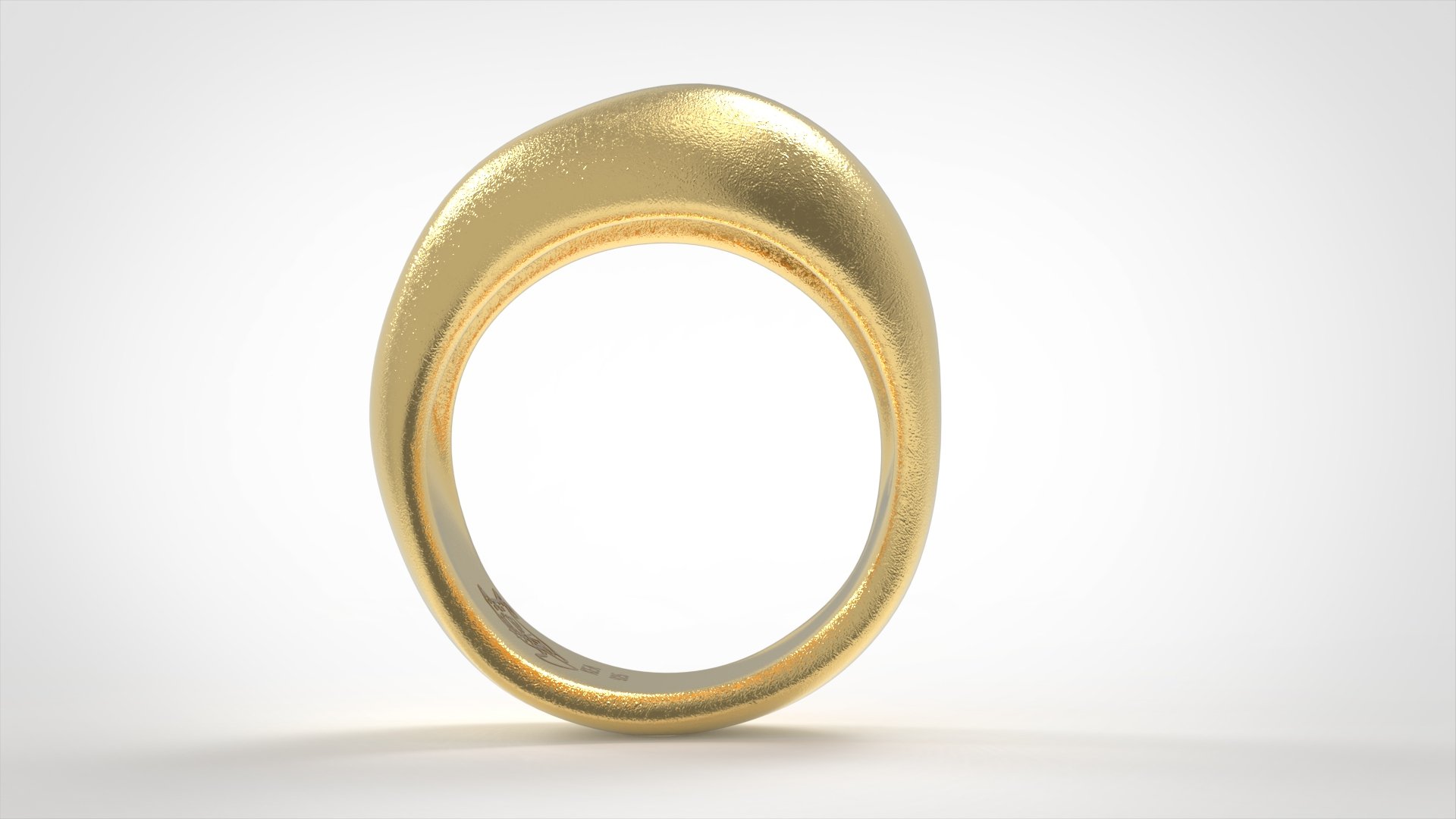
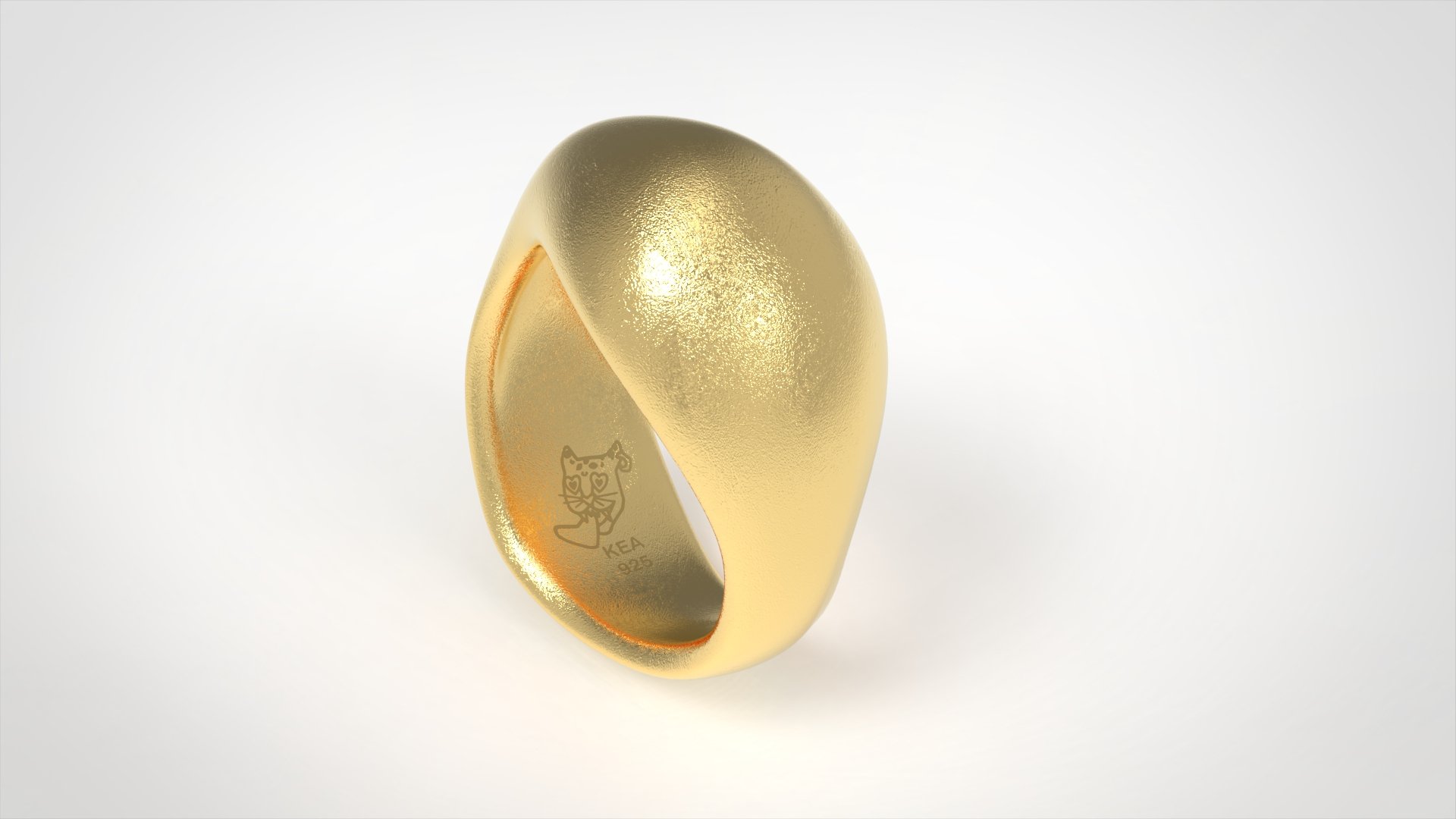
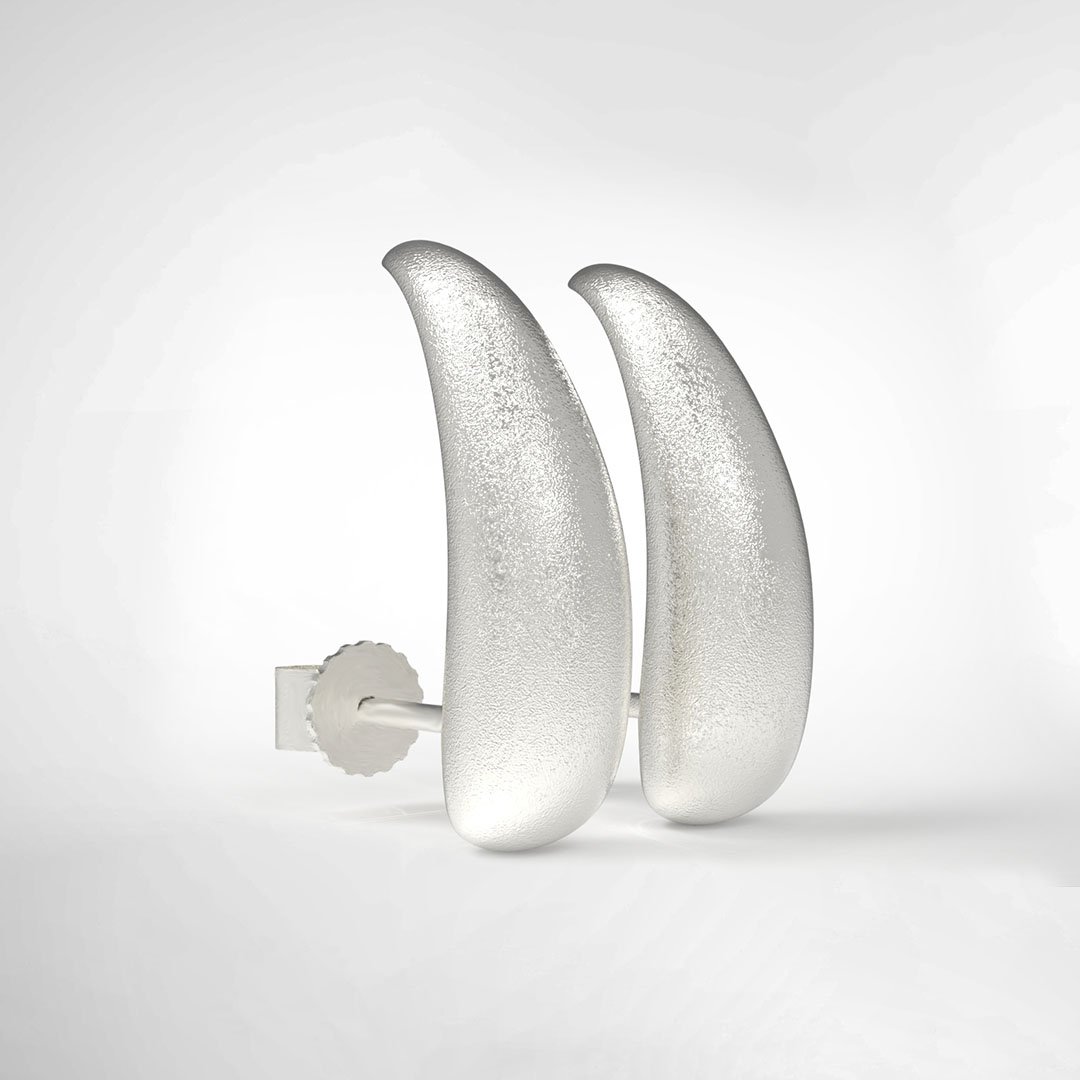
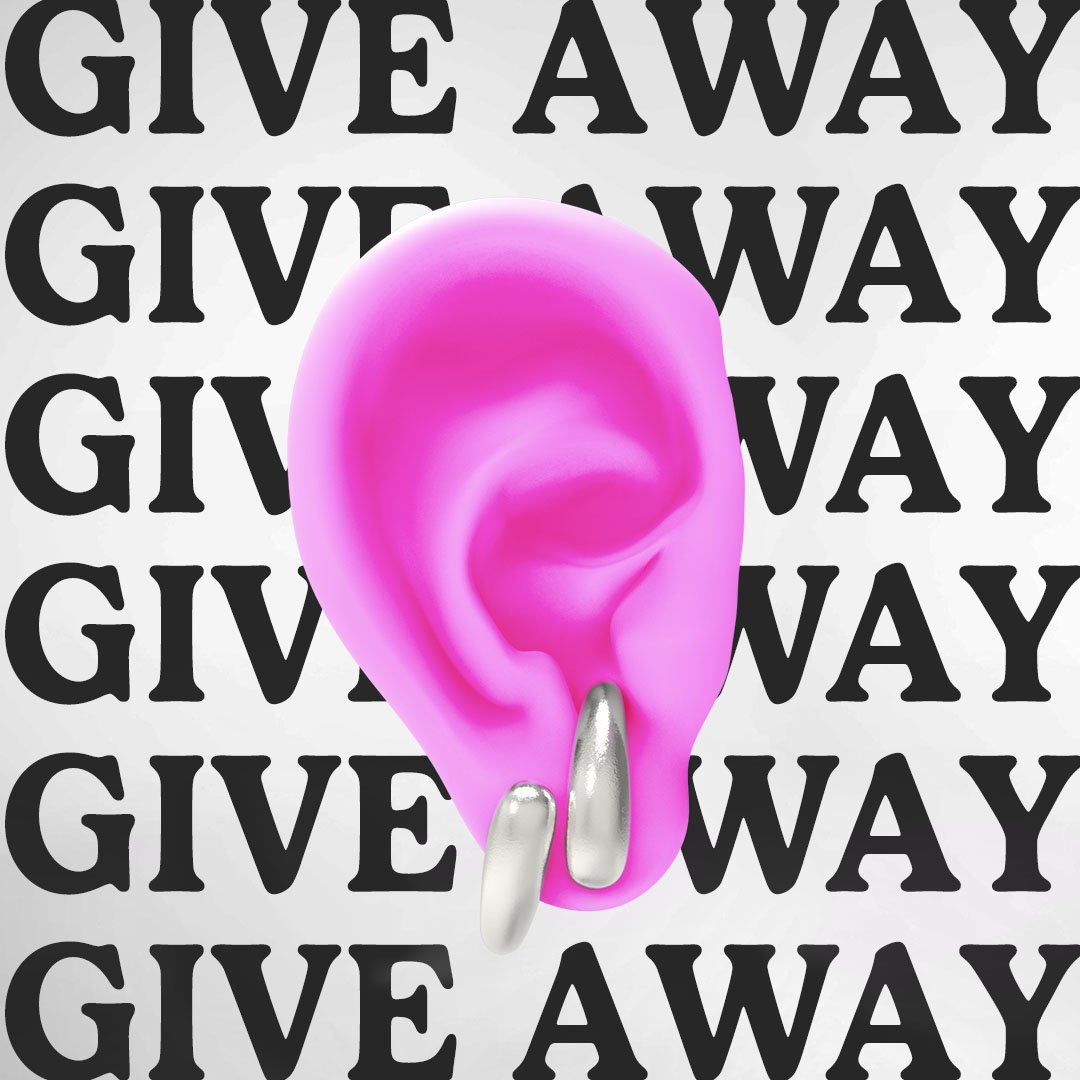
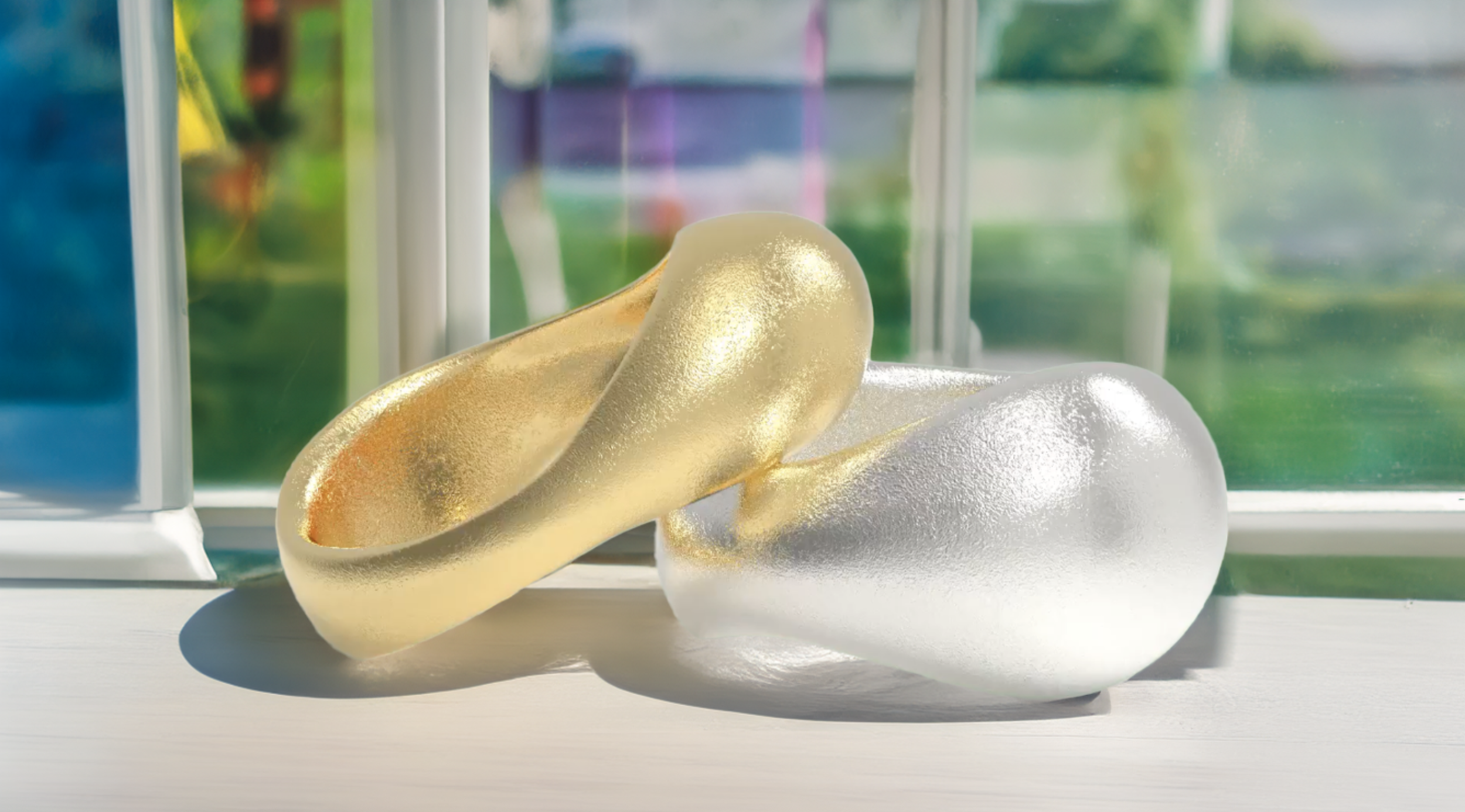
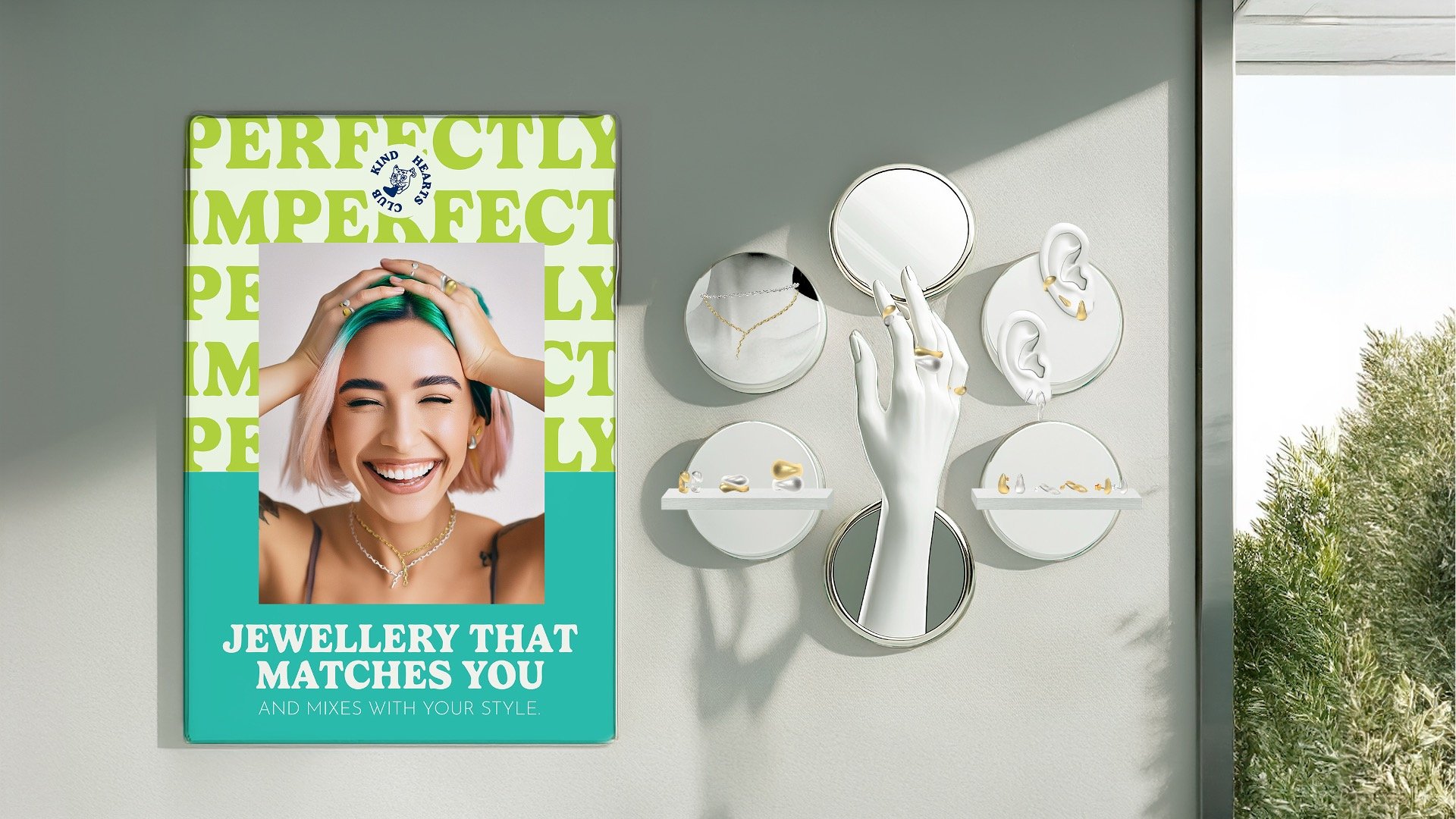
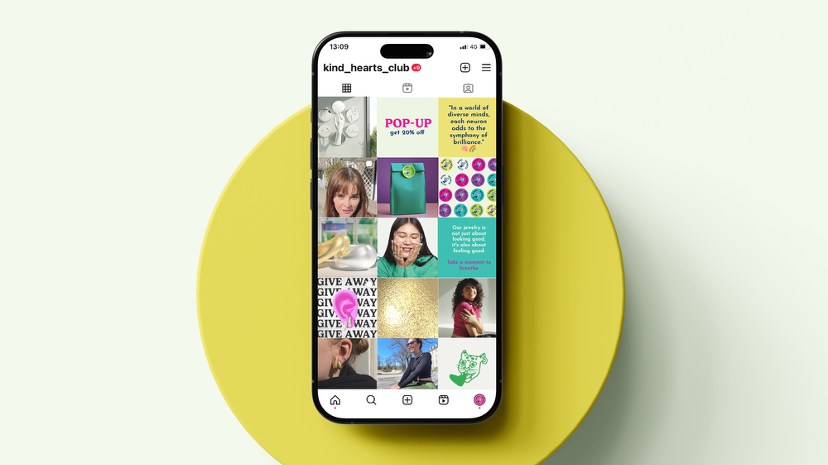
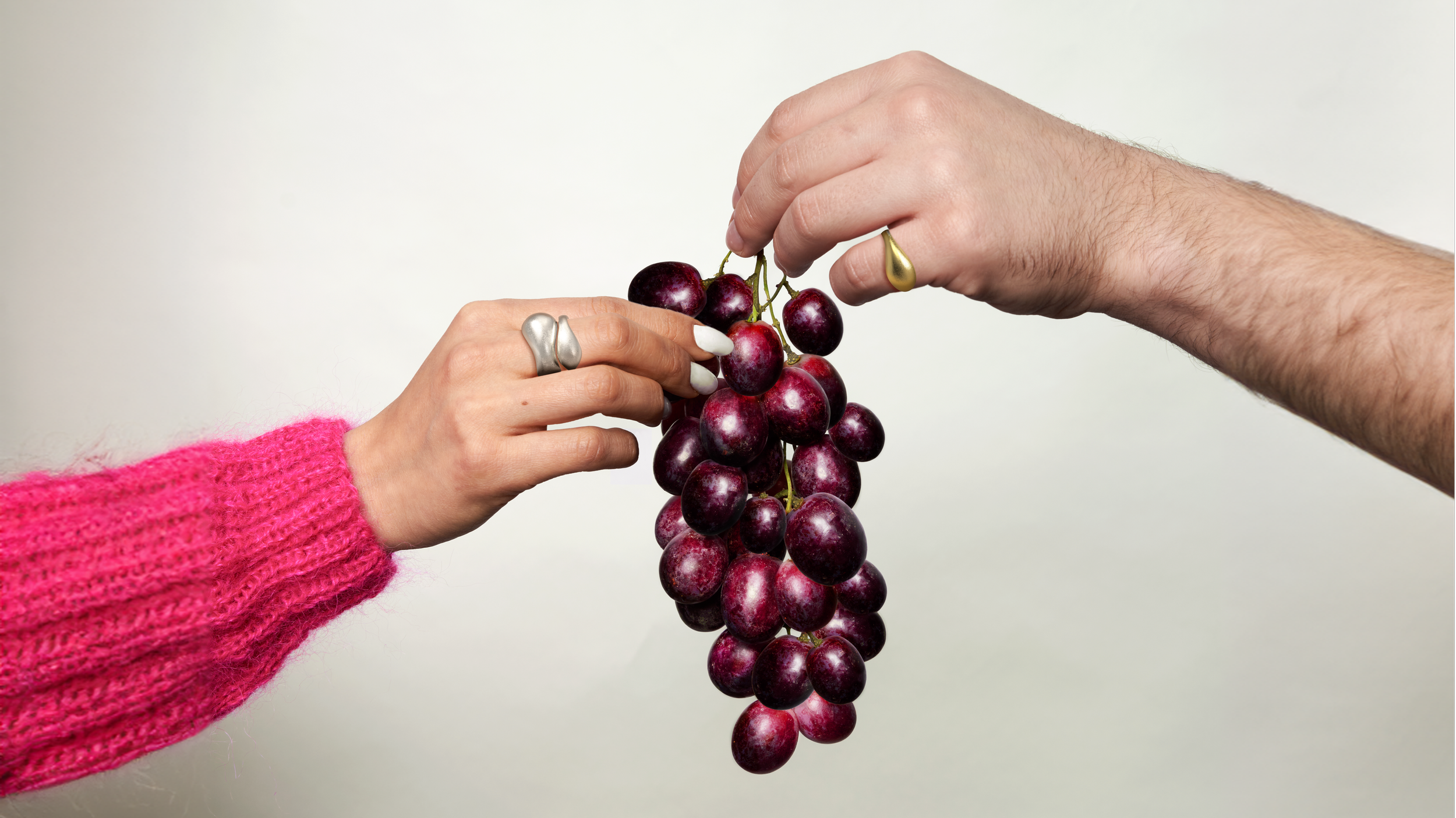
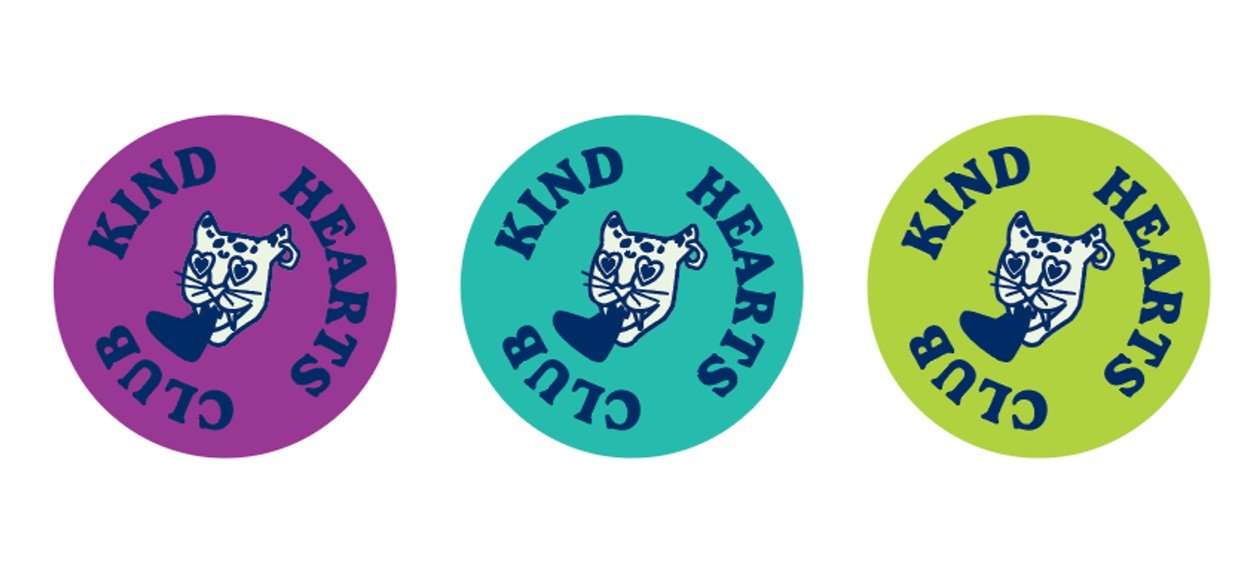
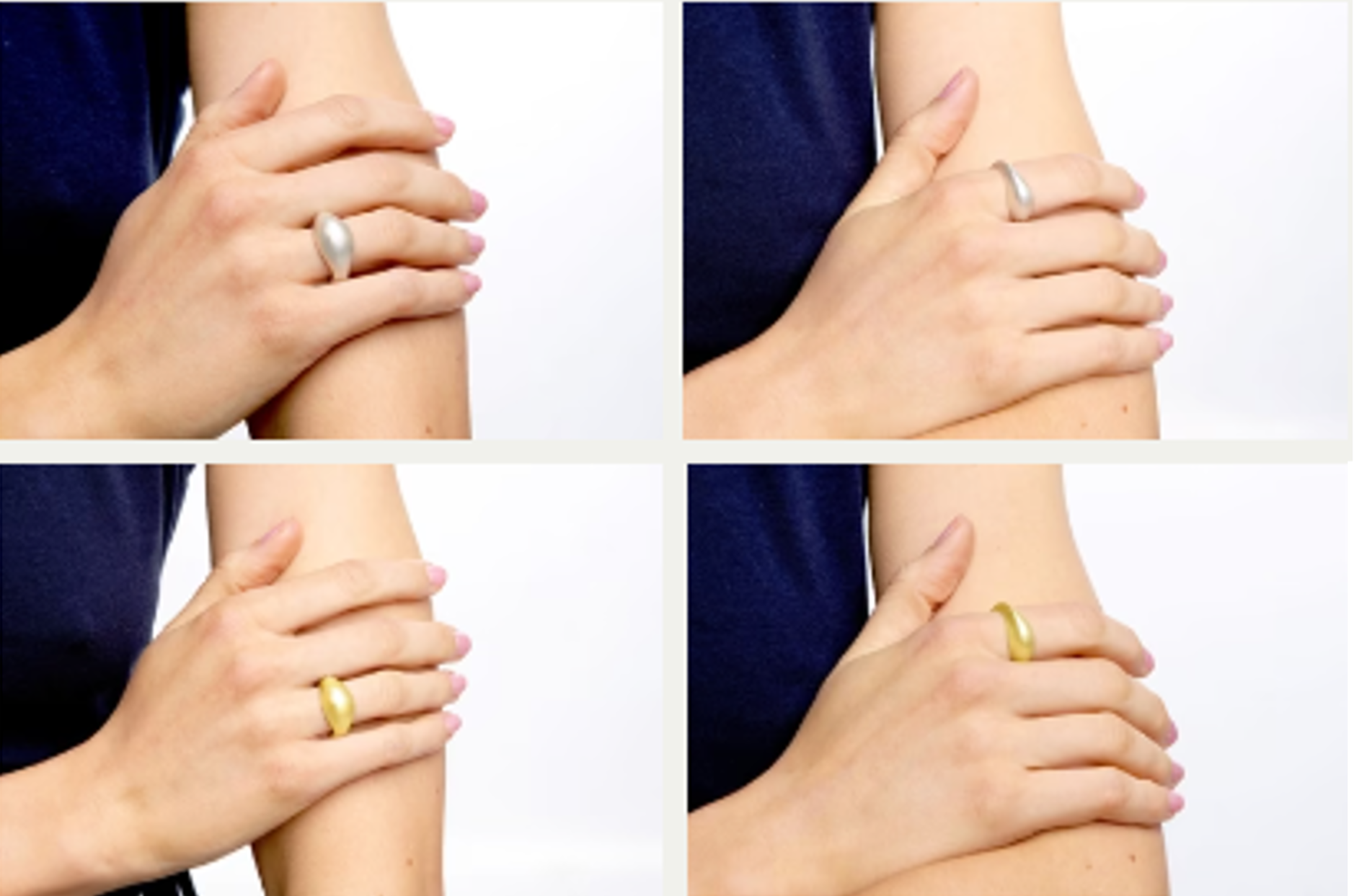
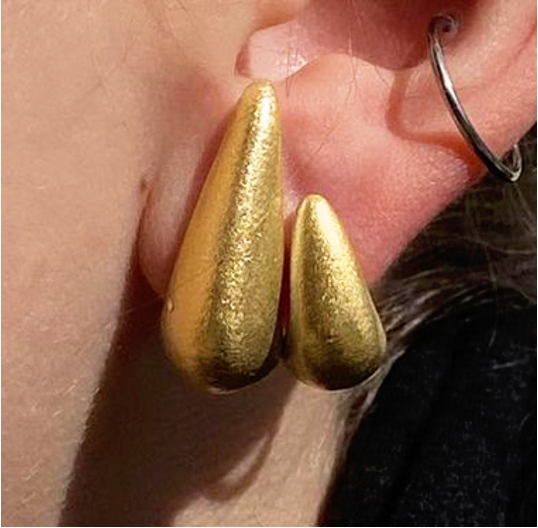
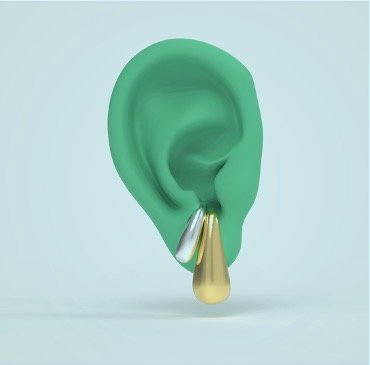
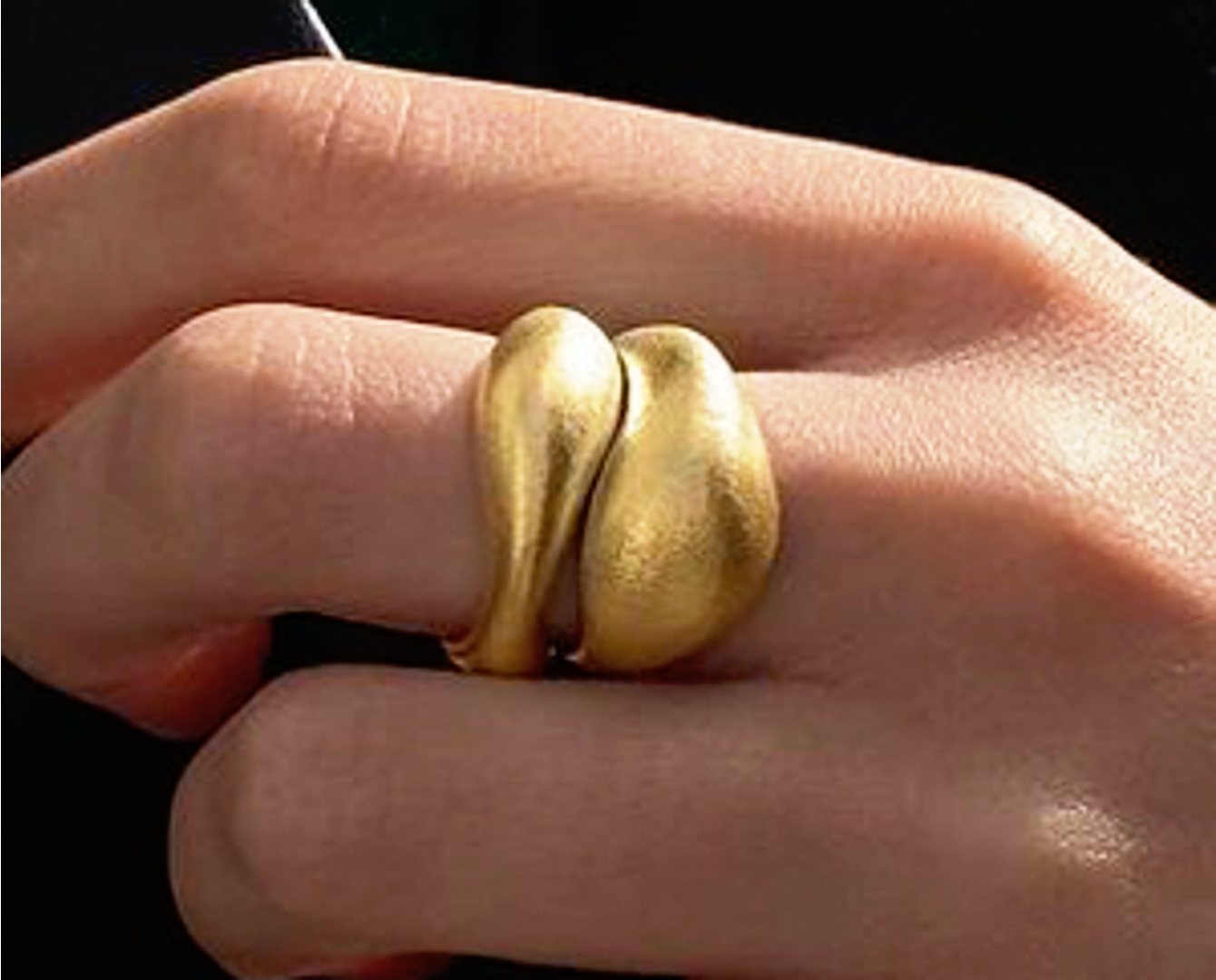
Team
This project was developed by:
Sine Harwits
Marie Müller
Sara Zeigler
Sidsel Bach Nielsen
Natascha Glentvor


